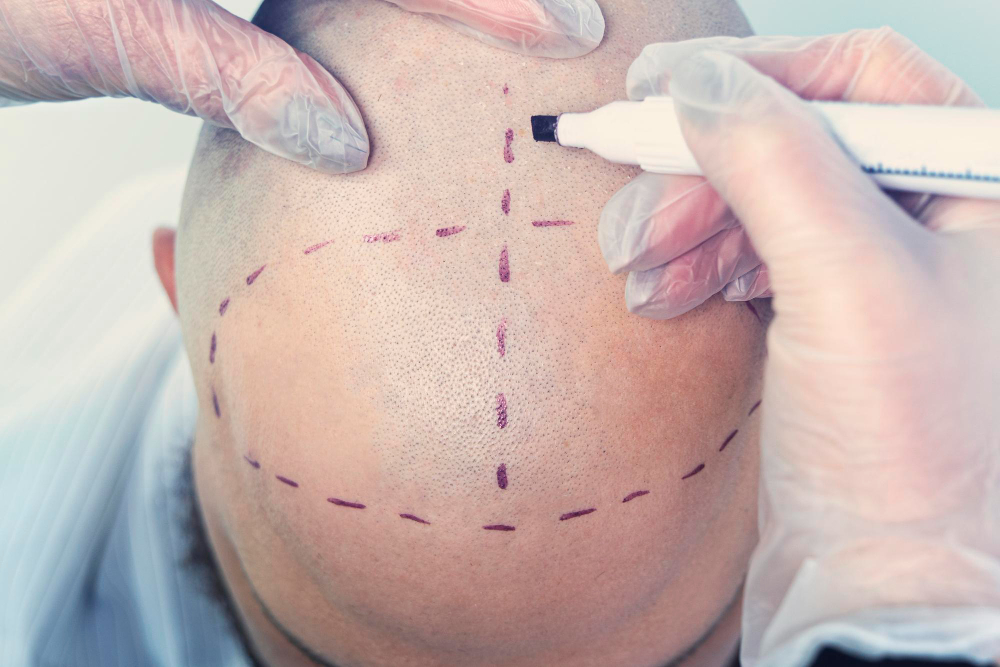
What is Sapphire Hair Transplantation?
Follicular unit extraction, or FUE, is transplanting individual follicles from one person to another through incisions.
Sapphire blades are not derived from blue sapphire stones in nature, as is commonly thought. Sapphire blades are produced from a synthetic sapphire (Al2O3) crystal that is hundreds of times harder than regular steel. Controlling every aspect of production in special equipment transforms flawless sapphire crystals into perfect blades.
How Do We Apply Sapphire Hair Transplantation to People?
Individuals now have greater aesthetic demands in today's environment when social media has become significant. Individuals' increasing aesthetical concerns drive aesthetic procedures to increase by a factor of ten or more. Sapphire hair transplantation is the most common FUE hair transplantation for men. First, hair from the donor region is removed using a micro FUE technique that employs micromotors and micro punctures.
Micromotors aid in the creation of more natural and dense sapphire hair transplantation results by allowing for a more significant number of grafts (a follicular unit) to be taken from the donor region in a shorter period. Micromotors are used in FUE hair transplantation procedures, known as "Micro FUE hair transplantation." Occasionally, manual punches may be utilized to remove grafts.
After the extraction procedure is finished, physicians use sapphire blades to open the channels in the targeted angle and direction.
This is a crucial stage of hair restoration with Sapphires. The transplantation is completed through the third and final stage, which begins with implantation. During this phase, the hair follicles from the donor region are carefully inserted via tiny cuts using sapphire blades.
By rotating the entire scalp 360 degrees, the sapphire hair transplantation method shortens the healing process. Aside from that, swelling (oedema), tissue damage, and irregular wound corners are hardly visible. The incision depth and width are identical in each patient, making sapphire hair restoration one of the most reliable techniques.
This way, we avoid deep or shallow incisions (channels), which lowers the success rate of hair transplantation.
What are the Benefits of Sapphire Hair Transplantation?
The surface of a sapphire blade is hard and smooth. As a result, the cuts produced with a sapphire blade are almost flawless, resulting in minor tissue damage. The importance of smoother incisions (micro incisions) cannot be overstated for faster recovery. Our doctors may make more frequent incisions because the ends of sapphire blades are V-shaped, allowing for more frequent and natural outcomes from FUE hair transplantation. You can vary the angle at which incisions are made with sapphire blades farther than traditional methods.
What Are the Benefits of the Sapphire Hair Transplantation Procedure?
For a natural appearance, the direction in which the transplanted hair grows is critical. Metal sensitivity is prevalent in society, and therefore the usage of sapphire blades results in improved hair transplantation outcomes for these individuals. Simultaneously, because the surface of the sapphire blades is smooth, germs are less likely to adhere to this surface and risk infection.

Although, since 2016, sapphire hair transplantation has been used, it is still a relatively recent procedure. Sapphire blades are also utilized for facial and eyebrow transplantation because they enable the creation of numerous channels in various directions. This technique, which has a practical application style and offers immediate healing benefits, is often chosen above other methods with its positive results, among its characteristics.
Why is Sapphire Hair Transplantation Important?
The blades used in sapphire hair transplantation have cutting-edge technology, which allows for more frequent, more stable incisions (channels) to be formed. As a result, the patient's outcome from sapphire hair transplantation is the greatest compared to all other variables. The rapid healing process, less oedema, and reduced pain and discomfort throughout the recovery period make significant contributions to the patient's comfort.
The likelihood of infection is reduced since germs cannot adhere to the smooth surface. Compared with other procedures, the sapphire hair transplant technique is the most comfortable and effective for patients.
A doctor should examine the patient before undergoing the FUE treatment with sapphire blades to ensure no health issues or past drug use. If the patient has any physical impairments or medicines, you should inform the physician of these facts. It may be required to quit smoking and drinking for a week or 3-4 days before the procedure depending on the doctor's advice.
What Should Be Done Before The Sapphire Hair Transplantation?
If anticoagulants are utilized, you should stop the prescription a week before the procedure. The doctor who prescribed the medication should be consulted and written consent obtained if anticoagulants are used. Because Minoxidil can cause increased bleeding during surgery, individuals with hair should cease using it a week before their operation. It's worth noting that FUE is a surgical technique; as a result, clinics that specialize in this area are preferable.
What Should Be Done After Sapphire Hair Transplantation?
After the sapphire hair transplant technique, there are still a few measures that you must follow to ensure a safe recovery. After all, it's stating the obvious, and it's correct. It appears to be repeating a truism rather than starting anything new. The injury occurs when the skull is subjected to rapid acceleration or deceleration forces. If a head fall occurs, it's crucial not to hit the head or rub it on a surface for ten days. Wearing zippered or buttoned clothing for the first few days significantly reduces this risk.
You can have a faster and more pleasant healing process if you take daily medicines prescribed by our clinic. It is also critical to avoid excessive sweating for 15 days after surgery. For one month following sapphire FUE hair transplantation, our clinic advises limiting high-intensity cardiac exercises; the hot tub and Turkish bath are used in moist places such as a sauna and swimming activities. People may resume these activities after the first month.
When will my hair grow after sapphire hair transplant?
The sapphire hair transplantation technique develops transplanted hair right after the surgery. After the first two weeks, most FUE hair transplantation patients transition into the telogen effluvium phase, also known as the resting period. This shedding is referred to as a shock of the loss of hair. These hairs begin to grow six months after the operation, and after the first year, their presence is apparent. It takes between 2 and 2 1/2 years to see all of the benefits.
What is the Sapphire Hair Transplantation Price?
Sapphire hair transplantation is cutting-edge technology, and FUE positively influences the result of the procedure. FUE significantly improves the patient's recovery process. Although some clinics charge an extra fee for the sapphire FUE technique, the Smile Hair Clinic cannot because it only uses the best tool. Our patients come first at our clinic. Therefore SAPPHIRE FUE hair transplantation is the norm at SMILE HAIR CLINIC. With no exception, all incisions (channels) in our clinic are created with sapphire blades.